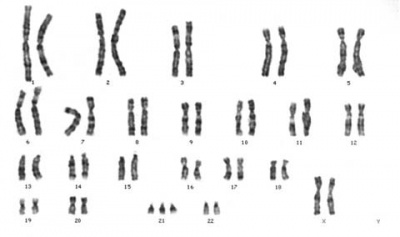Foundations Quiz: Difference between revisions
From Embryology
No edit summary |
No edit summary |
||
| Line 26: | Line 26: | ||
+ false | + false | ||
|| Following fertilization, at least 1 to 2 weeks of development must occur before implantation commences, it is only after implantation that regnancy tests work. | || Following fertilization, at least 1 to 2 weeks of development must occur before implantation commences, it is only after implantation that regnancy tests work. | ||
{Which of the following statements is correct about the zona pellucida: | |||
|type="()"} | |||
- surrounds the oocyte in the ovary | |||
- protects oocyte in the uterine tube | |||
- is a specialized extracellular matrix | |||
- is important for fertilization | |||
+ all of the above | |||
||Yes, the [[Z#zona pellucida|zona pellucida]] has many different functions at different times of oocyte development, fertilization and in the first week of development. | |||
{Pregnancy tests generally are based upon the detection in maternal urine of: | |||
|type="()"} | |||
- Estrogen | |||
- Progesterone | |||
- human Chorionic Somatommotropin | |||
+ human Chorionic Gonadotrophin | |||
- human Chorionic Corticotropin | |||
||Estrogen and Progesterone are made in the ovary and support the endometrium. human Chorionic Somatommotropin (or placental lactogen, stimulate maternal mammary development) and human Chorionic Corticotropin are both made by the placenta later in development. | |||
| Line 36: | Line 55: | ||
||The '''oocyte''' is present before fertilization, the '''conceptus''' refers to all the products of fertilization and is not a developmental stage, '''polar bodies''' are small exclusion bodies enclosing the excess DNA from oocyte meiosis. I did not discuss in detail '''blastomeres''' a term often used to describe the first cells formed from zygote mitosis. | ||The '''oocyte''' is present before fertilization, the '''conceptus''' refers to all the products of fertilization and is not a developmental stage, '''polar bodies''' are small exclusion bodies enclosing the excess DNA from oocyte meiosis. I did not discuss in detail '''blastomeres''' a term often used to describe the first cells formed from zygote mitosis. | ||
{The second and third trimesters cover the fetal period of development. | |||
|type="()"} | |||
+ true | |||
- false | |||
|| The second and third trimesters are the period of fetal (foetal) development. Yes I know, in the first trimester after week 8, this is also the early fetal period. | |||
{Which of these statements about environmentally derived abnormal development is incorrect: | {Which of these statements about environmentally derived abnormal development is incorrect: | ||
| Line 45: | Line 70: | ||
- rubella virus infection during pregnancy has serious abnormal development outcomes | - rubella virus infection during pregnancy has serious abnormal development outcomes | ||
||While we know that "specific environmental insults" can be associated with defects in specific systems, there are many other variables (time, dose, maternal status, synergistic and antagonistic factors, other) which can affect the final developmental outcome. | ||While we know that "specific environmental insults" can be associated with defects in specific systems, there are many other variables (time, dose, maternal status, synergistic and antagonistic factors, other) which can affect the final developmental outcome. | ||
Revision as of 11:29, 29 April 2010
Here are a few simple questions that relate to your introduction to embryology lecture and practical.
Take the Quiz

|
| Figure 1 |
Foundations Practical: Introduction | Week 1 and 2 | Week 3 and 4 | Week 1 to 8 | Week 9 to 36 | Neonatal | Critical Periods | Additional Resources | Quiz
Glossary: A | B | C | D | E | F | G | H | I | J | K | L | M | N | O | P | Q | R | S | T | U | V | W | X | Y | Z | Numbers
Cite this page: Hill, M.A. (2024, April 19) Embryology Foundations Quiz. Retrieved from https://embryology.med.unsw.edu.au/embryology/index.php/Foundations_Quiz
- © Dr Mark Hill 2024, UNSW Embryology ISBN: 978 0 7334 2609 4 - UNSW CRICOS Provider Code No. 00098G